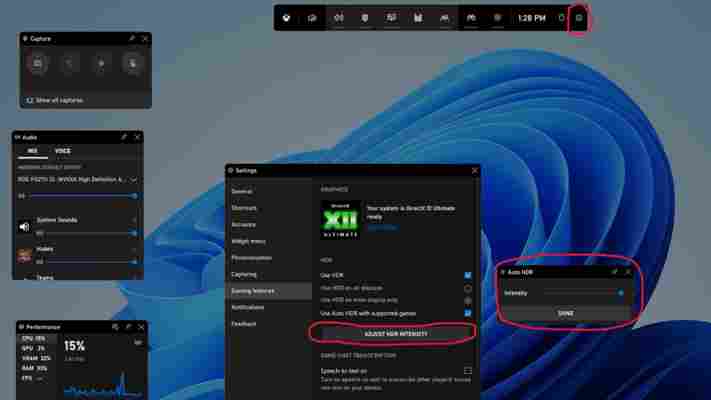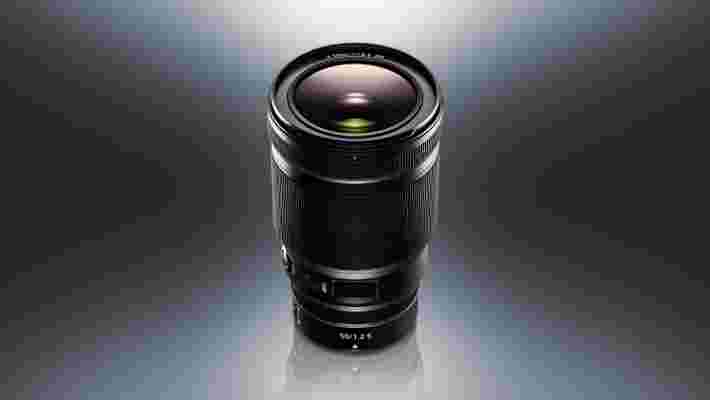There seems to be an issue with Samsung Display’s new QD-OLED displays that could potentially impact the new Samsung S95B OLED TV and Sony A95K QD-OLED .
A review of the new Alienware QD-OLED monitor by German magazine Heise.de ( 1 , 2 ) reported color inaccuracies that occur in the pixels between bright highlights and dark lowlights. The results look like green or purple pixels between all-white and all-black areas of the screen.
The culprit is most likely Samsung Display’s new pentile pixel design, which positions the three red, green and blue subpixels in a triangle formation rather than side-by-side in a striped, window-like configuration.
The magazine went on to say that the issue isn’t as noticeable in fast-motion scenes compared to static images like, say, a desktop screen. Still, this could be a bit of a concern for anyone who went ahead and pre-ordered a Samsung S95B OLED TV or Alienware QD-OLED monitor.

Analysis: Is this sub-pixel peril or a minor blip?
Without having a QD-OLED monitor or TV in front of us at this very moment, it’s tough to tell who’s right and who’s wrong here. The screen capture above looks pretty damning, but it might not spell doom and gloom if it’s not visible in non-static images - i pretty much anything that’s not a desktop or a TV logo on the bottom of the screen.
When asked about the issue, Samsung says it’s not unusual for displays to experience fringe color artefacting and says that the same phenomena can be observed on conventional LCD and OLED displays using an RGB stripe sub-pixel structure.
"It is not a typical RGB stripe pixel – but our proprietary structure optimized to enhance the core user experience of color and HDR. We selected this new pixel structure in order to optimize optical characteristics of QD-Display like brightness, color gamut and durability," Samsung Display said in a statement to FlatpanelsHD .
“The artifact pointed out also can be seen on conventional LCD and OLED displays using RGB stripe. Similar phenomenon is observed on the sides (left and right) side when displaying bright high contrast edge on conventional display products … Displays with better contrast modulation performance and wider color gamut and greater contrast ratio will accentuate this artifact.”
That’s not quite an admission of guilt, but it does acknowledge that Samsung Display is aware of the issue -- and that it’s a feature rather than a bug in the new panel technology.
We’re not quite sure everyone will feel the same way as Samsung about its new display, but until we get our hands on a Samsung S95B OLED or Sony A95K, we’ll reserve judgment.
One of Windows 11’s best gaming features just got better
Windows 11 gamers now have a smart new customization option, namely the ability to easily adjust the intensity of the effect of Microsoft’s Auto HDR feature via the Xbox Game Bar .
For those not familiar with Auto HDR, it’s a feature which takes a game that doesn’t have HDR support ( high dynamic range ) – in other words, one that uses SDR, or standard dynamic range – and it applies a simulation of an HDR effect (you need to have an HDR monitor , of course).
Basically, it’s taking normal SDR games and giving them something like HDR with more vibrant and brighter colors, usually with impressive results, although sometimes things can go a little awry.
The addition of this new Auto HDR intensity slider in the Xbox Game Bar means you can correct the image if it turns out too bright (or indeed overly dim), and fine-tune the picture you’re getting.
A further useful change in this department is that the Xbox Game Bar now has a toggle to turn on Auto HDR (or turn it off), which you’ll find in the bar’s Settings menu, in the Gaming Features tab.
Both of these features are now out and available to those Windows 11 gamers who grab the latest version of the Xbox Game Bar from the Microsoft Store.
Analysis: Helping to get Auto HDR right for your eyes

These are some useful changes, and it’s good to have the option to enable Auto HDR (or switch it off) right from in the Xbox Game Bar rather than having to take a trip to the Windows Settings panel. (Do note, though, that you need to relaunch the game you’re playing for the new choice to register).
What’s more important here, of course, is the ability to adjust the intensity of the HDR effect as needed. Obviously, the end result is a pretty subjective thing, and some folks might enjoy much more saturated and vivid colors, whereas others may prefer a more subtle effect. So now you can adjust the effect as needed on-the-fly, rather than just having to turn off Auto HDR if you find the default setting is just too off-putting.
What’s also nifty is that your chosen level of Auto HDR intensity is saved on a per-game basis, allowing you to use different settings for various games and have them all remembered individually.
As Microsoft explains , to use the feature, you need to head to the Xbox Game Bar’s Settings menu, then into Gaming Features, and click the ‘Adjust HDR Intensity’ button which will pop-up a small slider window to allow you to change the level from a minimal effect to maximum.
Remember that you’ll need to be running the latest version of the Xbox Game Bar app, and it’s also worth noting that Auto HDR does not have any effect on games which natively support HDR, as you’d expect.
Via Thurrotom
Canon and Nikon camera lenses are about to get a lot more expensive
If you've been thinking about boosting your collection of Canon or Nikon camera lenses, you may need to set aside a slightly larger budget than you'd planned, thanks to the knock-on effects of the pandemic.
Reports from Canon Rumors suggest that prices for many Canon RF and Canon EF lenses have increased significantly in the USA, while Nikon Rumors says that Nikon Z and F-mount lens prices are apparently due to go up from April 1 in northern Europe. Canon told us it had no comment about the price rises, and we'll update this story when we have official comment from Nikon.
The Canon price rises in the USA appear to have already affected 11 lenses. The biggest price boost is on the Canon RF 24-105mm F4 L IS USM, which is now $1,299 at most retailers, an 18% increase of $200. Other RF lenses to have been hit include the RF 70-200mm f/4L IS USM (now $1,799, a $200 increase) and its new telephoto primes, the RF 600mm F11 IS STM (now $799, a $100 rise) and the RF 800mm F11 DO IS STM (now $999, a $100 increase).
Nikon's price boosts appear to be more general, affecting "all imaging cameras and lenses", according to a letter from Nikon UK posted on Nikon Rumors. Fortunately, sports optics and the Nikon Z9 will be spared from the rises, but the rest of its imaging range will be given "new pricing" that will apply to all orders placed from February 1 that are invoiced on or after April 1. If you manage to settle your invoice before March 31, though, Nikon will apparently honor its old pricing.
So far, it doesn't appear that these price rises are affecting regions other than those mentioned above. Many Canon RF lenses in the UK, for example, have actually seen price cuts lately, though it's not clear whether or not this is just the calm before the storm.
Inevitably, Nikon appears to blame "a period of severe disruption in global supply chains" and "cost increases to component parts and logistics charges" for its price rises. We'll update this article when we discover just how big Nikon's premium is going to be.
Analysis: an inevitable pandemic tax

Until now, the main pandemic-related issue for photographers has simply been finding camera lenses that are in stock, particularly newer ones for mirrorless systems like the Canon RF and Nikon Z series. But that scarcity has now been followed by an inevitable price rise.
Like all tech companies, camera manufacturers have been hit by severe components shortages, supply chain issues, and staff shortages over a prolonged period during the pandemic, and some of those costs have inevitably been passed onto customers.
The full list of Canon lenses affected by the price rises in the US, compiled by Canon Rumors, is below – and it certainly doesn't make encouraging reading for anyone who's been considering buying a new zoom lens. That said, many of Canon's primes seem to have been spared (so far) and the price hikes don't appear to have hit other markets yet.
We're still waiting to see exactly how big Nikon's increases will be, but it's likely that they'll be similar in magnitude to those seen on Canon's range. So it certainly seems like now is a good time to buy a Canon or Nikon mirrorless lens, if you can find the old prices and get your order through in time.
Photography has always been an expensive hobby, but the pandemic has sadly added an additional premium for those looking to invest in new gear. That said, it's also fair to say that investing in your technique is often a better – and certainly cheaper – idea, and you can get started with our 41 tips and tricks to improve your photography .
The full list of Canon lens price increases (from Canon Rumors ):